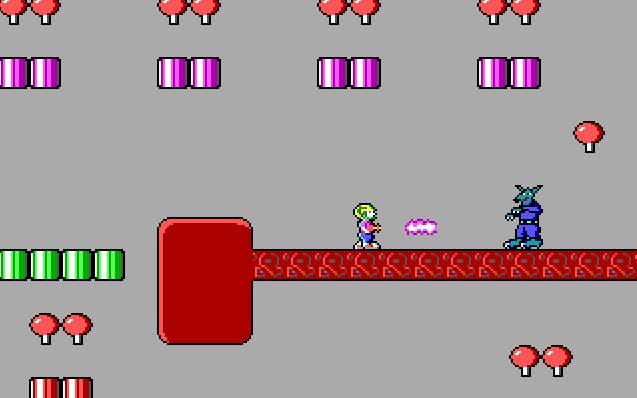How a Super Mario Bros 3 PC Port Created Id Software
A piece of gaming history was uploaded to the internet today.
This article first appeared on USgamer, a partner publication of VG247. Some content, such as this article, has been migrated to VG247 for posterity after USgamer's closure - but it has not been edited or further vetted by the VG247 team.
Today, in honor of the of the 25th anniversary of Commander Keen, the first major game from id Software, co-founder John Romero uploaded a video showing off a prototype of Super Mario Bros 3 for PC.
I understand that may not track for you. How does a defunct PC port of Super Mario Bros 3 connect to Commander Keen? Let's jump back in history.
See, the id Software co-founders met while working at a company called Softdisk: engine programmer John Carmack, software tools programmers and designer John Romero, intern and artist Adrian Carmack (unrelated to the former Carmack), and managing editor Tom Hall. They contributed to a monthly DOS games project at Softdisk called Gamer's Edge.
The problem the PC had at that point was the hardware was woefully weak compared to arcade machines or the Nintendo Entertainment System. Defender for the arcade had popularized side-scrolling in 1980, but the PC was still struggling with it in 1990, a year after the release of Super Mario Bros 3 on NES. John Carmack was a problem solver though and eventually, he hit on a method that would become known as adaptive tile refresh. Instead of the computer redrawing the entire screen every frame, which required more performance than was was available to PCs at the time, it would only redraw the parts that had changed.
The first prototype involved Carmack and Hall recreating the first level of Super Mario Bros 3 from scratch, while substituting one of the team's previous characters, Dangerous Dave, in the place of Mario. They even jokingly called the demo "Dangerous Dave in Copyright Infringement". When Romero saw their finished product, that changed everything.
They moonlighted on the project for 72 hours and produced what they thought was a compelling proof of concept for Nintendo. They were hoping Nintendo would let them port Super Mario Bros 3 to PC. The team had big dreams and a new name: Ideas from the Deep (IFD).
Nintendo shot them down weeks later.
Then Apogee Software founder Scott Miller contacted Romero about a potential publishing deal. Miller had previously sold his own games using the shareware model: players got the game for free and then paid the creator what they wanted in return. Miller's twist was he didn't give the entire game away for free; he gave players an early chunk of the game and then told them they could get more levels if they paid him.

Miller wanted to publish Romero's Pyramids of Egypt on shareware, but Softdisk owned that. So the team took their Mario demo tech and created the first Commander Keen game. They designed the game as a trilogy: players would get the first part of the trilogy for free and they'd have to pay for the second and third parts. The game was successful, ultimately leading to the creation of id Software a few months later.
A number of people will look at the video above and note the places where it's deficient. The physics are off, Mario looks weird; it just doesn't feel like Super Mario Bros 3. These are all valid complaints that are still missing the point of what the video represents.
That was created by a number of young men in a very short period of time, using very different technology and hardware constraints. They took one of the most popular games of that era and reverse-engineered it. They had no access to the original physics or assets, so the fact they even got that close is nothing short of awe-inspiring.
That's the kind of talent an entire company was built on.


